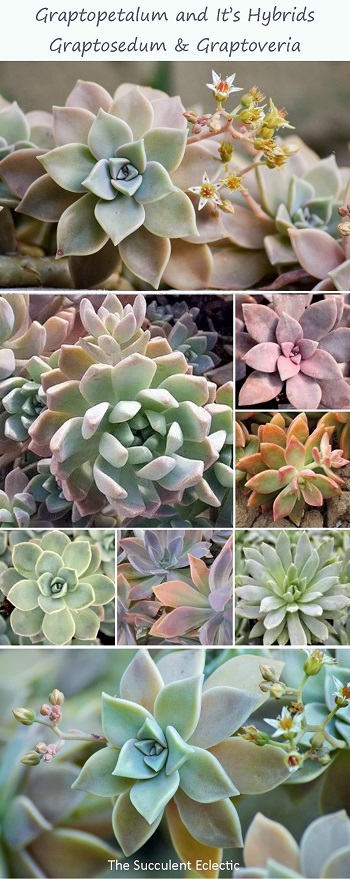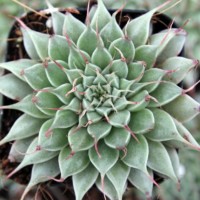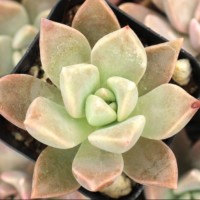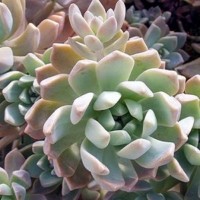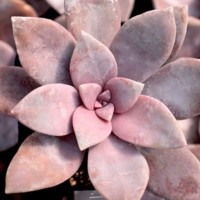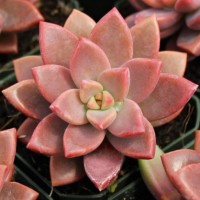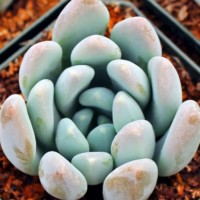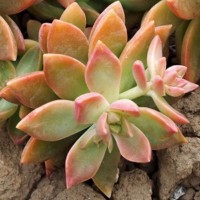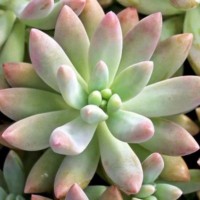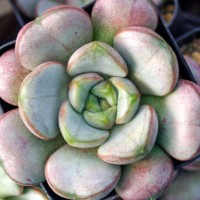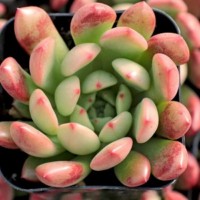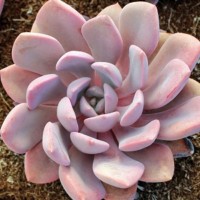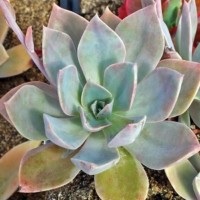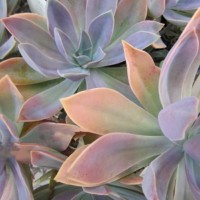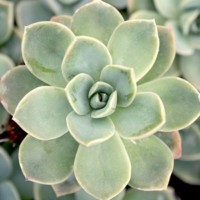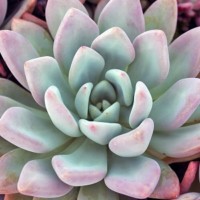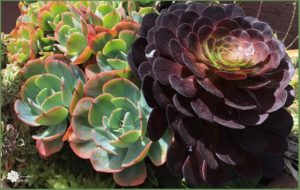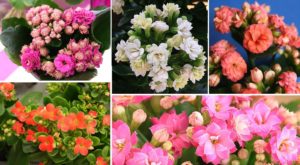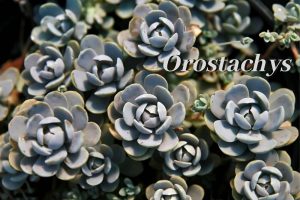Graptopetalum (Grap-toe-PEH-tuh-lum) is a genus of about 19 species including the ghost plant succulent. All are native to Mexico and the southwestern United States. Very similar in appearance to echeveria, graptopetalum form elegant rosettes at the end of curving, ever-lengthening stems. These stems help to create a thick carpet of succulent rosettes for groundcover or spilling over the side of a container. In addition to their flower-like good looks, they are well-known for their exceptionally easy care and quick propagation. Whether you are an expert or a succulent newbie, you should definitely include graptopetalum in your collection. Let’s see why.
Graptopetalum, Identification & Care
In this Post We'll Cover:
{Please note, some links in this post may be affiliate links to sites that pay me a small commission if you click on the link and make a purchase. This commission is at absolutely no cost to you. I only recommend products and companies that I have worked with and truly love! ~Kat}
How to Distinguish Graptoveria from Echeveria

This lovely Graptopetalum paraguayense, the ghost plant succulent, demonstrates the strong resemblance to echeveria. The teardrop shaped leaves form concentric circles about a common center — forming classic rosettes. These closely related genera are native to the same habitat, but there are some key differences that will help you to recognize the difference between the two:
- Bloom shape
- Leaf thickness
- Stems
- OffsetsSucculent offsets are the baby succulents that form at the b...
- Hardiness
Let’s take a closer look at each.
Graptoveria Blooms Compared to Echeveria
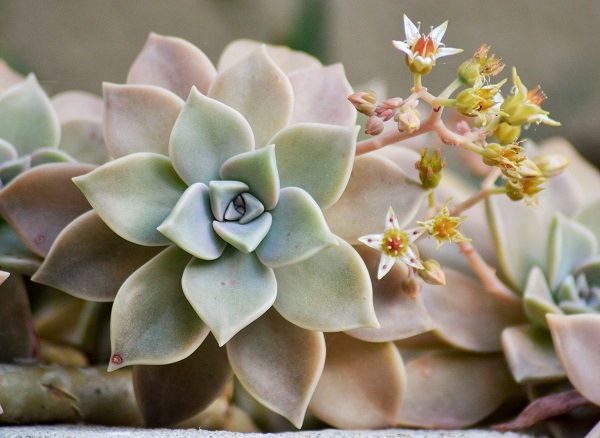
Echeveria blooms are similar in structure to those of graptoveria, but the look is quite different. Both form flowers with five pointed petals each along a stem. But echeveria blooms remain mostly closed. They are held far aloft above the plant, on succulent stems, with each blossom hanging downward, like a lantern. Echeveria blooms are highly attractive to hummingbirds. Graptopetalum flowers open wide, to form cheery stars that attract butterflies. The stems are somewhat woody in texture, well-branched and much shorter, displaying the starry blooms next to the flower-like plant. When your plants are in bloom, it will be easy to distinguish graptopetalum from echeveria.
Graptoveria Have Thicker Leaves

Although most look more like the ghost plant succulent, Graptopetalum amethystinum has pudgy leaves that look like so many polished stones. All graptopetalum have thick leaves, thicker than those of echeveria. This distinction makes it likely that graptopetalum come from even drier regions than the echeveria since they store so much more water in their leaves. Perhaps the soil in the region is sandier, far less water retentive, to explain the difference.
Graptopetalum Stems Grow Long, Naturally
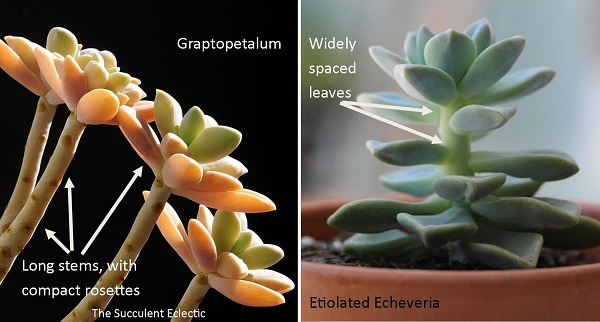
In ideal growing conditions, the rosette of an echeveria remains close to the ground. The stem lengthens only when the plant is etiolated, or stretching for more light. When this occurs, you will see the space between the leaves of the rosette grow wider, as the plant exposes the full surface of each leaf to the light.
Graptoveria stems, however, continue to grow longer, even in perfect lighting. In time, they become quite woody and will arch over and down, which is especially effective as they tumble over the side of a container. This is just part of the plant’s growth pattern. The rosettes maintain their nice, compact form as the stems grow ever longer. They can certainly be cut back and re-rooted at any time.
Graptoveria Offsets Quickly and Easily
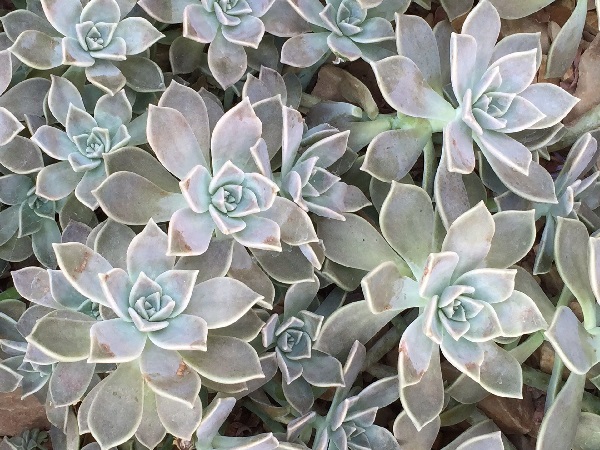
Graptopetalum grow quickly, setting offsets freely. Rather than forming new rosettes at the base of the mother plant, as is the case with echeveria, graptopetalum stems branch, with each supporting a new rosette. In a short time, they form a bed of succulent roses — an elegant ground cover. The pale, silvery rosettes of the ghost plant succulent, Graptopetalum paraguayense, are exceptionally beautiful in a moonlight garden, where they reflect the light of the moon at night. The sight is mesmerizing!
PropagatingPropagating (PRAH-puh-gate-ing) a plant is to grow another p... graptopetalum is a snap — literally. Simply snap off a rosette, or take a cutting, then root it. You can also propagate them by the leaves. Graptopetalum are widely considered to be about the quickest and easiest succulents to propagate. When a large bed is established, you will find leaves dropping and re-rooting on their own.
Graptopetalum Hardiness
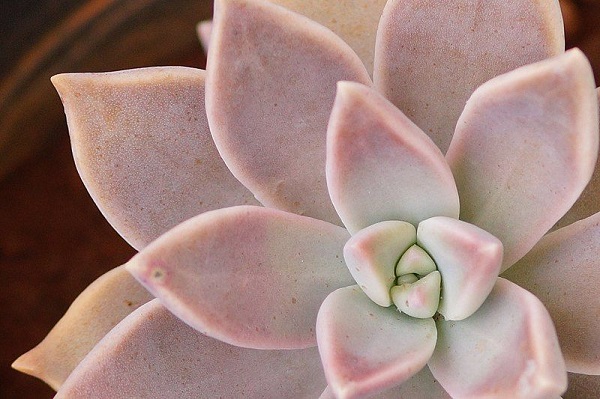
Like echeveria, graptopetalum are considered tender succulents. They are not cold hardy like sempervivum or some sedum. Nevertheless, they are really pretty tough plants. Most will survive temps down to 20°F (7°C). They like full sun, and are far less likely to sunburn than most succulents, even in the heat of summer. And despite their sun-loving nature, graptopetalum tolerate shade better than echeveria. They will thrive even when conditions are hotter, colder, wetter, drier, sunnier or shadier than they prefer. Graptopetalum are an excellent choice forbeginnerss or for challenging growing conditions.
Watering Graptoveria
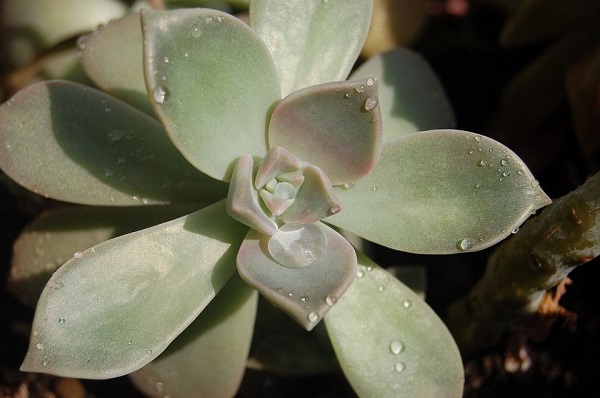
Like all succulents, graptoveria should be planted in a fast-draining succulent soil mix. This is what the plants evolved to adapt to. With the right soil, watering becomes very simple: Water only when the soil is dry, and water thoroughly. When you follow this “drench and drought” cycle, you are providing water in a manner very similar to the climate where the succulents are native. This is the key to growing healthy, happy plants.
Graptopetalum and It’s Hybrids, Graptoveria and Graptosedum
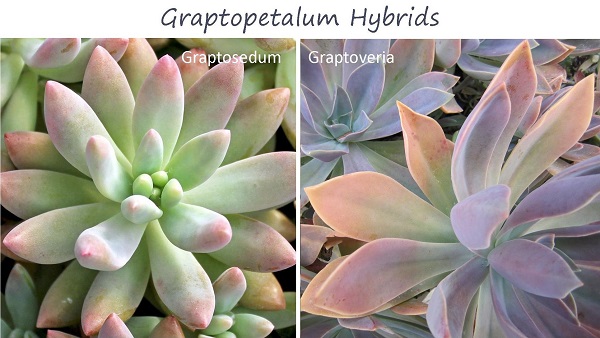
One of the many qualities to love in graptopetalum is the wide range of colors a single plant will produce when grown in different conditions. The same ghost plant succulent that is a pearly white when grown in partial shade, flushes pink and yellow tones in full sun. When the weather warms, the pink toned become predominant, with traces of peach. These colorful qualities breed true in the many hybrids developed from crossing graptopetalum with echeveria and with sedum.
Graptosedum is the result of crossing graptopetalum with sedum, and the results are so charming. Graptosedum ‘Darley Sunshine’ shown on the left above, forms rosettes of narrow, pudgy leaves that shade from silver through apple green to a lovely, soft rose at the tips. Graptoveria, as the name implies, are the hybrids of graptopetalum and echeveria. Graptoveria ‘Fred Ives’, the magnificent result of crossing graptopetalum with echeveria, creates enormous rosettes over 12 inches in diameter that flame in colors of pink, peach, violet, amber, turquoise, silver and sea green, depending upon its sun exposure.
Take a look at some of the many colorful faces of graptopetalum, graptoveria and graptosedum:
Controlling Pests on Graptopetalum and Hybrids
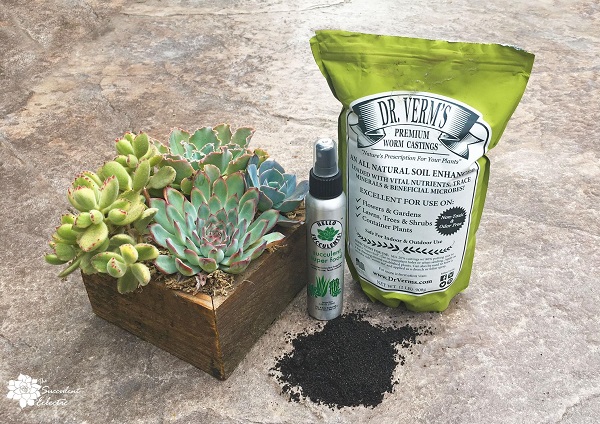
As much as I love graptopetalum and their hybrids, pests like mealybugs and aphids like them too. There are a number of good and effective ways to control pests on your succulents. My favorite is to use worm castings, either dried or in tea form as a spray. Worm castings provide excellent fertilizer for all of your succulents. But the biggest benefit is the insect repellant properties. Worm castings are rich in chitinase, an enzyme that will dissolve the exoskeleton of most insects. When your plants absorb the chitinase, it spreads throughout all of their cells. Insects can scent the chitinase, and they avoid it out of self-preservation. Worm castings should be included in every gardener’s supplies.
Graptopetalum & Hybrids are Pet Safe

Graptopetlum and its hybrids graptoveria and graptosedum are non-toxic and safe to grow around pets and small children.
This symbol denotes pet-safe succulents. For more information about succulents and pets, just click on this image anywhere on this site.
Shopping for Graptopetalum and Hybrids
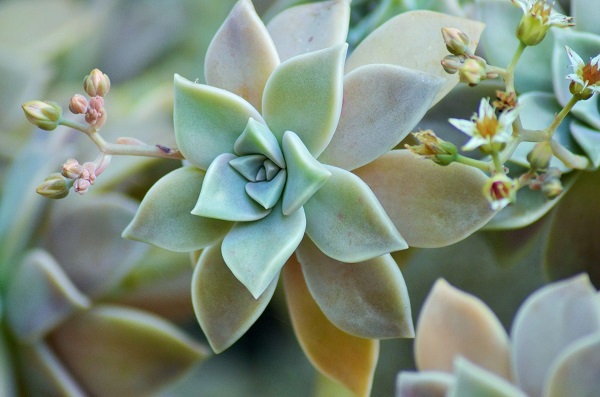
For sensational succulents that grow and propagate quickly and easily, it is hard to beat graptopetalum and its hybrids. You will find a few graptopetalum, including the ghost plant succulent, at Mountain Crest Gardens. They also have a very nice selection of graptoveria and some colorful graptosedum varieties.
Do you have graptopetalum or its hybrids in your collection? If not, will you add it now? I would love to know. Please take a moment to leave me a comment and let me know!
‘Til next time, Happy Gardening!

P.S. For more succulent gardening information, please subscribe to The Succulent Eclectic! You will also get my FREE e-course, 7 Steps to Succulent Success! Thanks!
